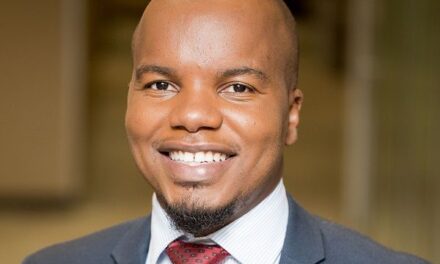
From BC to PC – if ever there will be a new normal again

By Coen Welsh.
A recent conversation on LinkedIn spurred me to remember a Change Leadership training session I facilitated. It was one of the first times I presented this training and I prepared well. We did an exercise and it completely backfired.
Here’s the exercise:
- Get all participants to gather round and stand in a circle.
- Provide deliberately vague instructions to observe each other for 3 minutes.
- Then ask the participants to turn around with their backs to each other.
- Now they need to change their appearance.
- Turn back to face each other.
- Then go around in a circle and see if you can identify the changes.
- Then go sit down and debrief.
The debrief is where the magic is supposed to happen. The debrief questions prompt the team to think about change.
Question one: Who did nothing? On average about 10% do not change anything. When you highlight this they often retort: “I changed my facial expression” but that’s just like changing nothing.
Lesson One: People resist change. These are the laggards and will only change if they are forced to. https://www.investopedia.com/terms/a/adopter-categories.asp
Question Two: How many people took something off? A tie, a shoe, a belt, spectacles, a jacket or jewellery etc. Normally around 70% to 90% of the participants take something off or hide something.
Lesson Two: Change is associated with loss. Most people refer to the good old days where things were better. But, remember polio? The WHO defines polio as: Polio was once a disease feared worldwide… and continues … [this programme] reduced polio by 99%. The good old days weren’t as good as we would like to believe and Steven Pinker argues that now is the best time to be alive in his book Enlightenment Now. However, the negative perception of the world we live in persists. Hans Rossling debunks some of our favourite myths that are hard to let go in Factfulness.
Question Three: Who did something so original (or sneaky) that it was impossible to identify the change in their appearance?
Lesson Three: Some people exchange necklaces or items of clothing. According to the diffusion of innovation theory some people are innovators. I don’t see this very often, but when I do, it’s never more than one or two people out of groups of ten and more. These innovators like and seek change. They are the first to identify and accept new and exciting technology and processes.
Question Four: Who was confused with the vague instructions?
Lesson Four: We normally have a bit of a discussion here, but the main takeaway is that with clear instructions and possibly some incentive like a prize for the most creative change, people are helped to embrace change more or quicker.
Question Five: The next question is the pièce de résistance. When everyone has settled back into their seats you ask: Who kept the changes? I specifically target the people who removed something like rings, glasses or clothing. As soon as people sit down, they revert back to their previous appearance. They put their glasses, rings and clothing back on.
Lesson Five: If we do not pay attention to change and reinforce the changes, inertia forces people to return to their previous state. In the 1940’s, Kurt Lewin developed the Unfreeze-Change-Refreeze model.
The last phase is crucial to change. Ice that must melt and poured into a different shape container and frozen again is analogous of the change process. We first need to unlearn old habits, then learn new behaviour and finally anchor this into new behavioural patterns.
This is also where my exercise fell flat, and I ended up with egg on my face (almost). I did this exercise in Swakopmund where I now live and run a small BnB on the side with my wife. Swakop is notorious for its changing weather conditions. One moment it can be hot and the next moment its misty and cold. This workshop was held in a venue out toward the desert (a heritage site btw) and we went outside to do the exercise. When we returned back inside and everyone settled down the weather changed and it was hot. That day nearly all participants took their jackets and coats off. When we sat down again they didn’t put it back one.
Lesson Six: If the conditions change, change happens “naturally” or at least people have the choice to change and this may make the changes last longer and even become entrenched into new behaviours.
Lesson Seven: As a consultant/trainer you need to think on your feet. A colleague was co-facilitating this discussion and jumped in to explain the learning point above.
As an interesting aside. When we did this workshop, the printers who prepared the handouts punched the holes of the training material on the wrong side of the handouts. So, the participants had to add their slides to their folders upside down and back to front. Once they put these material into their folders they had to turn their pages from right to left with the spine of the folder on their right. The fascinating observation was how quickly they got used to this new normal and this bring me back to my brief conversation with Tom Calvard where we discussed the new normal and the new world of work PC (post-covid), that is, if there ever will be a post-covid.
In summary: (If you managed to read this far)
- There will always be resistors and innovators. Don’t claim either as a victory or failure.
- Clear instructions and outcomes help people to get on board faster with change.
- The new normal is not necessarily worse and bad. Animals and Ozone are returning. O3 Ozone!
- Changing the environment, that is changing the conditions may help people to “choose to change” by themselves and this helps to make the changes more permanent.
- Finally, people get used to change fairly quickly. Think about how quickly it went from being strange to seeing people wearing masks in public to how we almost don’t notice it anymore.
Therefore, if you can push through the uncomfortable part of change, it gets better and easier until it becomes the new normal.
Coen Welsh is an I/O Psychologist and co-founder of Capacity Trust. He holds an MBA from the prestigious Jack Welch Management Institute and is pursuing a Ph.D. where he is researching the Capabilities of Leaders in the 21st Century.
Image by Joshua Gresham on Unsplash











































